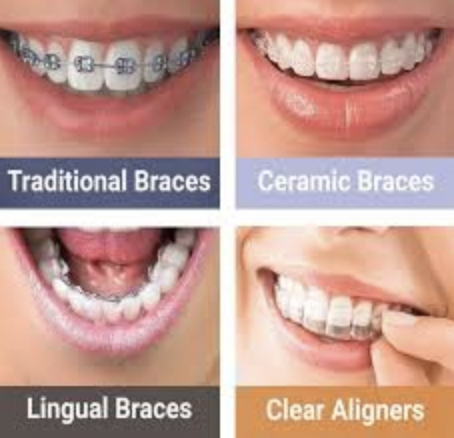
Invisalign vs. braces: pros and cons
Invisalign is nearly invisible, removable, and often more comfortable, but requires strict adherence to the 20-22 hour wear time and is best for mild to moderate cases. Braces are more effective for complex issues, are a fixed option, but are more noticeable, may cause more discomfort, and require dietary restrictions and more challenging cleaning. The choice depends on the severity of the dental problem and the individual’s lifestyle and discipline.
Invisalign:
Pros:
Aesthetics: Clear aligners are nearly invisible, making them a discreet option.
Reovable: They can be taken out for eating, drinking, brushing, and flossing, which allows for a more normal diet and easier cleaning.
Comfort: The smooth plastic is often less irritating to the mouth than metal braces.
Convenience: Fewer doctor visits are often needed, and the treatment may be faster for some cases.
Cons:
Discipline: Requires significant self-discipline to wear for 20–22 hours a day.
Complexity: Not suitable for very complex orthodontic issues.
Inconvenience: Requires removal and re-insertion for every meal or drink, and must be brushed before putting back in.
Traditional braces
Pros:
Effective for complex cases: Can handle severe orthodontic problems more effectively than Invisalign.
Fixed option: The fixed nature means they cannot be removed, which can be a benefit for those who struggle with discipline.
Potentially lower cost: Can sometimes be cheaper than Invisalign, depending on the specific case.
Cons:
Aesthetics: Metal braces are more noticeable.
Dietary restrictions: Require avoiding hard, sticky, or chewy foods.
At the Smile Team, we provide our clients with the best treatment options for them so book a consultation with Dr. Abid Hidayat today. We are open Mondays to Saturdays and speak GUJARATI, HINDI, URDU, TAGALOG and ARABIC. You can reach our family dental care office in Scarborough, Toronto, Ontario, by calling 416-546-5599.
